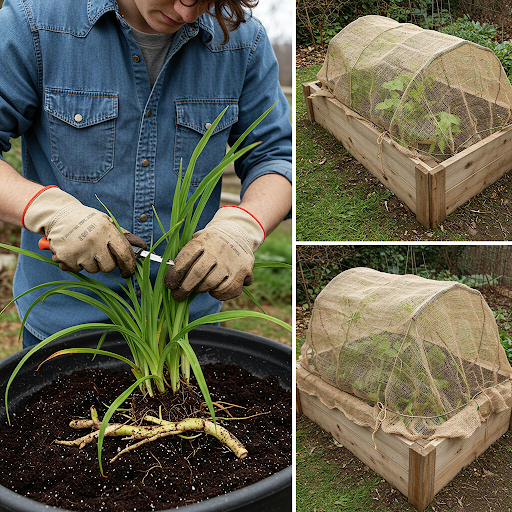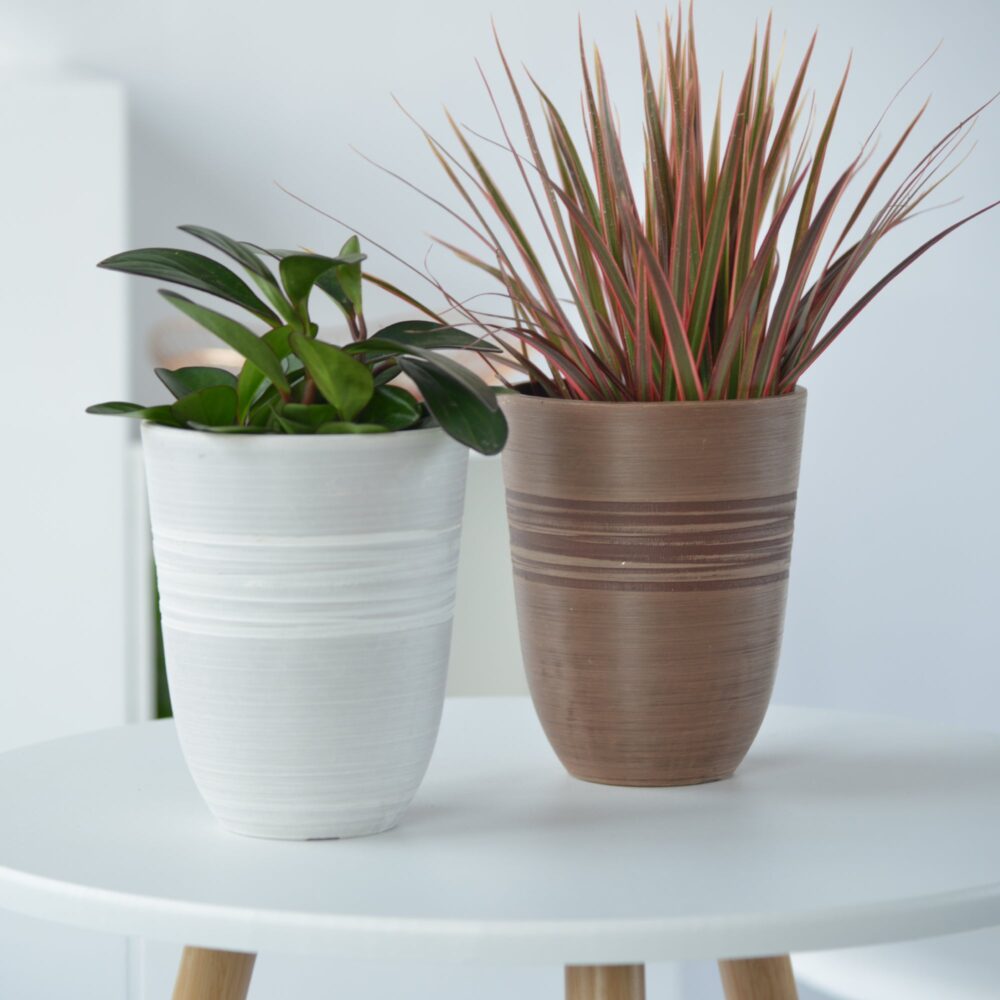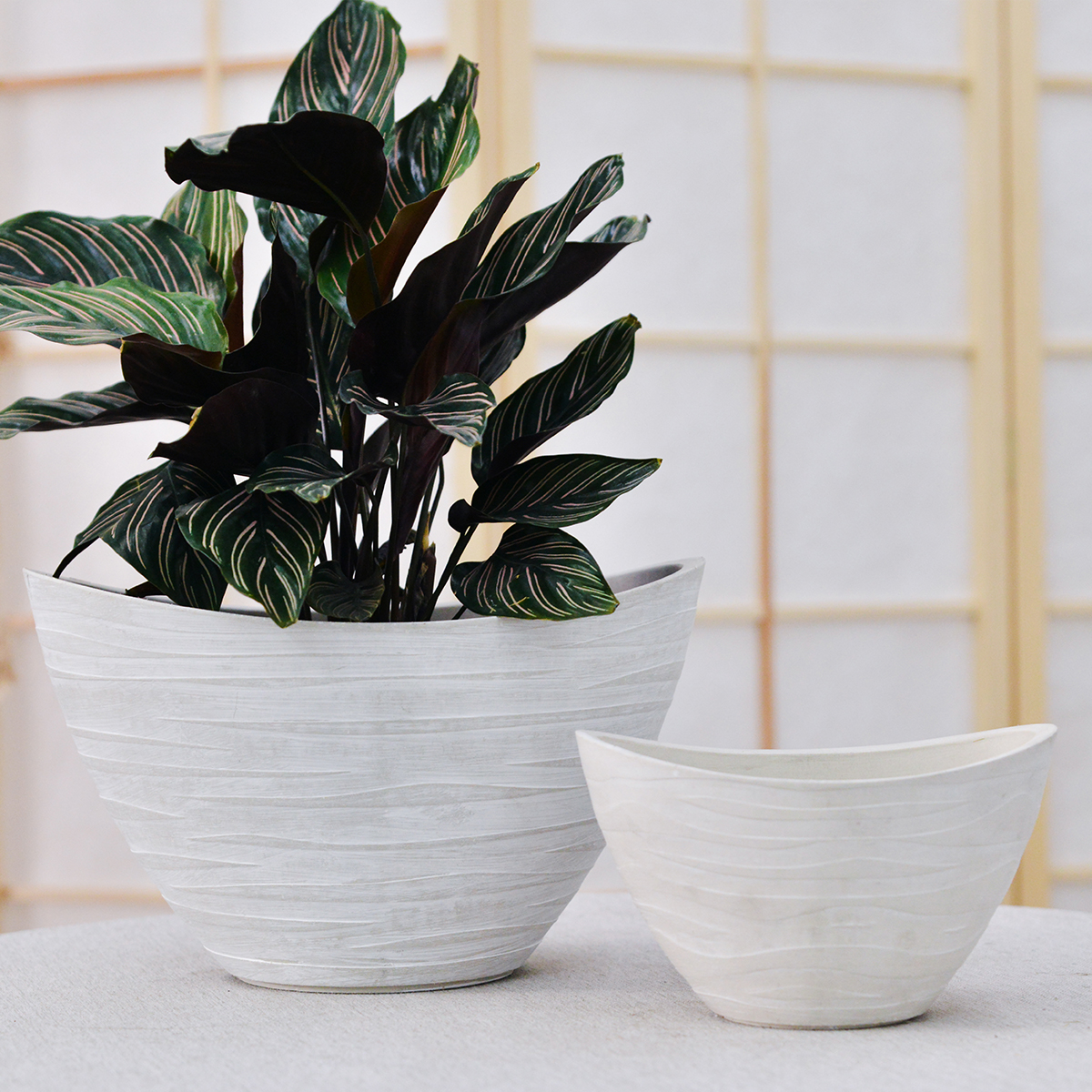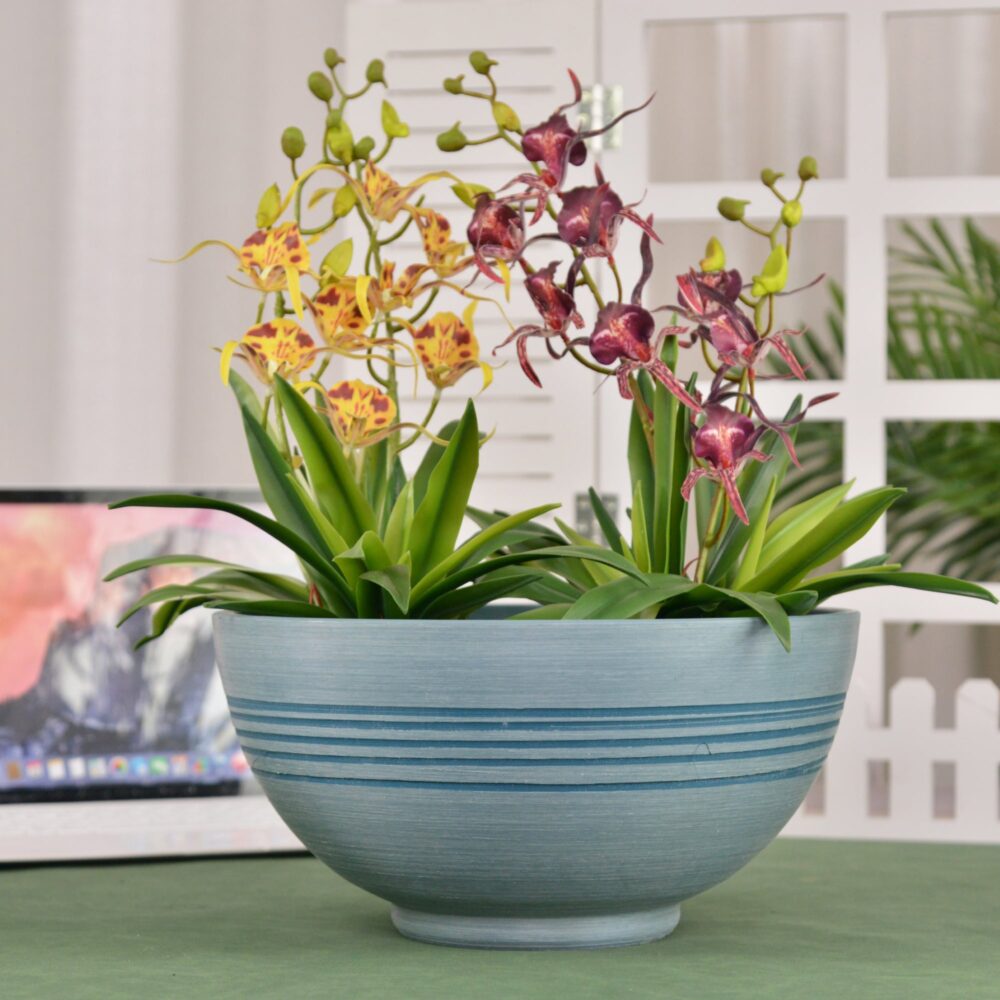What Special Care Techniques Are There for Growing Perennial Plants in Outdoor Planters? Ensuring Years of Beauty
Growing perennial plants in outdoor planters offers a fantastic way to add lasting beauty and structure to patios, balconies, and decks. Unlike annuals that complete their life cycle in a single year, perennials return year after year, providing continuous enjoyment. However, growing them successfully in containers requires some special care techniques compared to planting them directly in the ground. Here’s what you need to know to keep your perennial planter displays thriving for years to come.

1. Choose the Right Size Planter:
Perennials generally have more extensive root systems than annuals, so selecting a sufficiently large planter is crucial.
- Go Bigger Than You Think: Opt for larger and deeper containers than you might initially consider. This provides ample space for root growth and helps retain moisture, which is especially important in containers.
- Consider Mature Size: Research the mature size of the perennial you’re planting and choose a planter that can accommodate its growth over several years. You may need to repot into a larger container as the plant matures.
2. Select a High-Quality Potting Mix:
The right potting mix is essential for good drainage and aeration, which are vital for healthy perennial roots in containers.
- Avoid Garden Soil: Garden soil is too dense for containers and can compact, leading to poor drainage and root rot.
- Use a Well-Draining Potting Mix: Choose a high-quality potting mix specifically formulated for containers. Look for mixes containing ingredients like peat moss, coir, perlite, and vermiculite. These mixes provide good drainage while still retaining enough moisture.
3. Water Wisely:
Watering correctly is critical for perennials in planters, as they can dry out more quickly than in the ground.
- Monitor Soil Moisture: Check the soil moisture regularly, especially during hot and dry periods. Stick your finger about an inch or two into the soil; if it feels dry, it’s time to water.
- Water Thoroughly: When you water, do so deeply until water drains out of the bottom of the planter. This ensures the entire root ball is moistened.
- Avoid Overwatering: Overwatering can lead to root rot. Ensure your planter has adequate drainage and don’t let the pot sit in standing water. Water less frequently during cooler months or when the plant is dormant.
4. Fertilize Regularly:
Nutrients in potting mix will eventually be depleted, so regular fertilization is necessary to support healthy perennial growth.
- Start in Spring: Begin fertilizing in the spring as new growth emerges.
- Use a Balanced Fertilizer: Use a balanced, slow-release fertilizer or a liquid fertilizer applied every few weeks during the growing season. Follow the instructions on the fertilizer packaging.
- Reduce or Stop in Fall: Reduce or stop fertilizing in late summer or early fall as the plant prepares for dormancy.
5. Provide Adequate Drainage:
Good drainage is non-negotiable for perennials in containers.
- Ensure Drainage Holes: Make sure your planter has adequate drainage holes at the bottom to allow excess water to escape.
- Consider a Drainage Layer (Optional): While debated, some gardeners still prefer to add a thin layer of gravel or broken pottery at the bottom of the planter to improve drainage. However, ensure this layer doesn’t become waterlogged itself.
6. Overwintering Techniques:
Protecting your perennial planters during the cold winter months is crucial for their survival, especially in regions with freezing temperatures. Container roots are more exposed to cold than those in the ground.
- Choose Cold-Hardy Perennials: Select perennial varieties that are hardy in your USDA Plant Hardiness Zone.
- Move to a Sheltered Location: If possible, move your planters to a sheltered spot like an unheated garage, shed, or against a south-facing wall. This provides protection from harsh winds and extreme temperature fluctuations.
- Insulate the Planter: Wrap the planter with burlap, bubble wrap, or an old blanket to provide insulation for the roots.
- Mulch the Surface: Apply a layer of mulch (such as shredded leaves or straw) to the soil surface in the planter to help insulate the roots.
- Water Sparingly: Water very sparingly during the winter months, only when the soil is dry to the touch on a mild day.
7. Divide Plants When Necessary:
Over time, some perennials can become overcrowded in their containers. Dividing them not only rejuvenates the plants but also prevents them from becoming root-bound.
- Signs of Overcrowding: Reduced flowering, stunted growth, or roots circling the inside of the pot are signs that division might be needed.
- Best Time to Divide: The best time to divide most perennials is in early spring or fall, when they are not actively growing.
- Gently Divide: Carefully remove the plant from the pot and gently divide the root ball into smaller sections, ensuring each section has healthy roots and foliage. Repot the divisions into fresh potting mix.

8. Choose Perennials Suitable for Containers:
While many perennials can be grown in containers, some are better suited than others. Look for varieties that are naturally compact or tolerate being slightly root-bound. Examples include:
- Daylilies (Hemerocallis)
- Hostas
- Coneflowers (Echinacea)
- Salvia
- Sedum
- Lavender
- Many ornamental grasses
9. Protect from Extreme Weather (Beyond Winter):
Besides winter, be mindful of other extreme weather conditions.
- Intense Summer Heat: In very hot climates, you might need to move planters to a partially shaded location during the hottest part of the day to prevent stress.
- Strong Winds: As with any container, secure or place perennial planters in a sheltered spot if your area is prone to strong winds.
By implementing these special care techniques, you can successfully cultivate a vibrant and long-lasting display of perennial plants in your outdoor planters, enjoying their beauty year after year.
Plant Pots 6 inch 8 inch 10 inch for Indoor Plants, Set of 3 Modern Decorative Planter ts with Drainage Hole, Decorative Flower Pots
By greenship-seo|2025-04-10T06:39:28+00:00January 14, 2025|Categories: Hand-carving Series|Tags: Decorative Flower Pots|
HS
By greenship|2024-08-13T06:45:17+00:00August 13, 2024|Categories: Hand-carving Series|
20T
By greenship|2024-08-13T06:42:22+00:00August 13, 2024|Categories: Hand-carving Series|
20YB
By greenship|2024-08-16T05:37:57+00:00August 16, 2024|Categories: Hand-carving Series|
11V
By greenship|2024-08-13T03:05:48+00:00August 13, 2024|Categories: Hand-carving Series|
13 inch Planter for Indoor Plants, Set of 2 Modern Decorative Plant Pots with Drainage Hole, Cute Bowl Shape Flower Pots
By greenship-seo|2025-04-10T07:41:46+00:00January 10, 2025|Categories: Hand-carving Series|Tags: Decorative Flower Pots, Self-Watering Pots|






